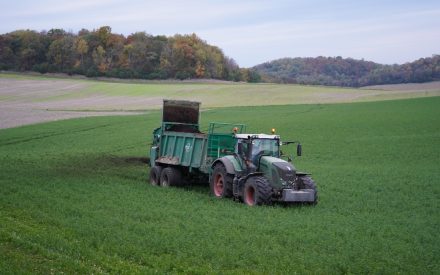The benefits of using legumes in crop rotations is well established. This study explored a cover crop system utilizing annual clovers in Wisconsin that takes advantage of shorter season crops (i.e. winter wheat, vegetable crops), to enhance rotational impacts, to provide nitrogen credits to the next year’s crop, and to grow additional biomass that potentially can provide a late season forage crop. Approximately 40% of annual precipitation and Growing Degree Days occur after August 1st in Wisconsin.
This study addresses four questions:
(1) What dry matter (DM) yields can be obtained from Berseem Clover (Trifolium alexandrinum), Crimson Clover (Trifolium incarnatum) and Barley (Hordeum valgare L.) when planted following winter wheat in early to mid-August?
(2) What nitrogen credit might be obtained from Berseem and Crimson clovers?
(3) How well do these cover crops scavenger nitrates from the soil profile?
(4) What are the potential late season uses of annual clovers for grazing, stockpiling or harvesting as forage?
Project outcomes:
- Berseem Clover dry matter yields ranged from 2.68 to 1.2 Tons/DM/Acre, averaging yields of 1.7 Tons/DM/Acre.
- Crimson Clover dry matter yields ranged from 3.32 to 1.06 Tons DM/Acre averaging 1.8 Tons/DM/Acre.
- Barley yields from 2014 – 2015 ranged from 1.76 to 1.30 Tons/DM/Acre averaging 1.53 Tons/DM/Acre.
- In 2015 corn yields showed a yield response of 9 % following the Berseem and Crimson Clovers compared to no-cover crop and a 23 % advantage when compared with corn following barley. These yield comparisons were averaged across all nitrogen rates except the zero N rate. The study utilized 8 nitrogen rates from 0 lbs. N/acre to 280 lbs. N/acre.

 BMPs of NMPs #6: On-Farm Implementation of Nutrient Management in Southwest WI
BMPs of NMPs #6: On-Farm Implementation of Nutrient Management in Southwest WI


